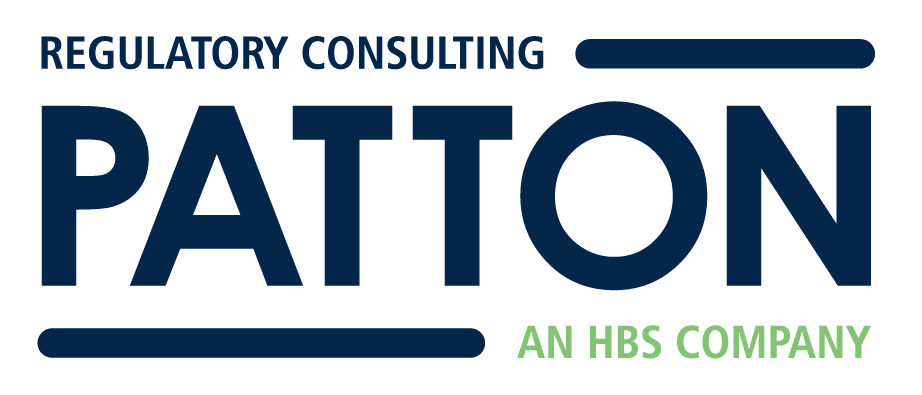January 2024
Inside This Issue
TJC Updates – Survey Process and Report Design:
Happy New Year to our readers and hoping you all have a happy, healthy and successful 2025! This month’s edition of Perspectives starts off with what Joint Commission calls a “Special Report,” but don’t worry, it’s not full of new things you have to do, it contains some updates from TJC on their survey process and report design.
The first change announced is a modification to the report that is produced after a survey with a new sorting of information. Findings will reportedly be sorted by priority on the SAFER™ Matrix, rather than alphabetically by chapter and EP number. TJC also indicates that it will be easier to see which findings are standard based and which are CoP level, but details are not described.

A second change involves the SAFER™ Matrix, which is now going to include an EP descriptor term in addition to the EP number. This looks really helpful for understanding the big picture of what is being reported. We find when looking at an organization’s report, even we have to occasionally look up an EP phrase to recall what the standard and EP number represents. This change should make things clearer and easier to understand, particularly for administrative leaders who may be less familiar with standard and EP numbers. TJC indicates that this enhancement will initially only apply for accreditation programs, with certification programs at a later date.
A third change is that TJC is going to create a benchmarking tool to be able to compare your organization’s survey performance with peer organizations. This benchmarking will be stratified by size, organization type and location, urban or rural. However, there is one word of caution on this: TJC does not permit any organization to use this information for marketing purposes of any type. Some readers may remember the old “accreditation with commendation,” where some organizations advertised that they had achieved this level of performance. TJC sees a similar risk with this new tool if used inappropriately. The tool is said to be available on your extranet site starting in January, but we looked while drafting this newsletter and did not see it posted as yet.
 The fourth change announces the availability of a new document upload tool on the extranet site that would allow an organization to upload documents they want to share with surveyors. This could potentially be valuable as TJC, and most organizations don’t want to be sharing data sticks which could be infected with a software virus. But we noticed the Perspectives article mentioned that the upload tool would not become available until the initiation of a survey. There are so many things to get organized that first morning, that uploading required day one documents at that time would seem too labor intensive. But uploading ad hoc requests from surveyors for additional policy documents or other materials later in the survey might be very convenient.
The fourth change announces the availability of a new document upload tool on the extranet site that would allow an organization to upload documents they want to share with surveyors. This could potentially be valuable as TJC, and most organizations don’t want to be sharing data sticks which could be infected with a software virus. But we noticed the Perspectives article mentioned that the upload tool would not become available until the initiation of a survey. There are so many things to get organized that first morning, that uploading required day one documents at that time would seem too labor intensive. But uploading ad hoc requests from surveyors for additional policy documents or other materials later in the survey might be very convenient.
There is also a “coming soon” boxed note at the end of the article that indicates that in the near future behavioral health and human services organizations and free-standing telehealth organizations will be required to upload documents prior to their survey. It’s not clear from the article why this is going to be mandatory for those programs.
 A fifth potentially useful process change involves the TJC for-cause survey process. Organizations sometimes feel left in the dark about why a for-cause survey is taking place. TJC is going to enhance the “transparency of this process by informing the organization of the areas they wish to survey and provide the general reason for the survey, without revealing specific details or breaching the confidentiality” of the complainant. Additionally at the conclusion of the survey TJC will now provide a verbal overview of findings and allow for questions.
A fifth potentially useful process change involves the TJC for-cause survey process. Organizations sometimes feel left in the dark about why a for-cause survey is taking place. TJC is going to enhance the “transparency of this process by informing the organization of the areas they wish to survey and provide the general reason for the survey, without revealing specific details or breaching the confidentiality” of the complainant. Additionally at the conclusion of the survey TJC will now provide a verbal overview of findings and allow for questions.
Revised EM and IC Standards:
 There are two articles describing new standards, the first is a new EM chapter for BHC and assisted living centers. The second new chapter is a revised IC chapter for BHC and office-based surgery practices. Both revised chapters become effective July 1, 2025, and both are available for download now from the TJC website in the prepublication section. TJC has also developed what they call a “reference guide” or summary of which standard went away, which got moved to a new location, and what is new. This can also be downloaded when you download the revised chapter. If you operate these programs you will want to download the revised chapters and begin your analysis of changes needed at your organization.
There are two articles describing new standards, the first is a new EM chapter for BHC and assisted living centers. The second new chapter is a revised IC chapter for BHC and office-based surgery practices. Both revised chapters become effective July 1, 2025, and both are available for download now from the TJC website in the prepublication section. TJC has also developed what they call a “reference guide” or summary of which standard went away, which got moved to a new location, and what is new. This can also be downloaded when you download the revised chapter. If you operate these programs you will want to download the revised chapters and begin your analysis of changes needed at your organization.
Consistent Interpretation:
They did not run this column this month, but hopefully it will return next month as it is always informative.
Additional Content on Recent Topics:
This month’s issue has additional content on two recent themes discussed several times in 2024 on sustainable healthcare and improving the physical environment for patients or visitors with a disability such as vision impairment or hearing loss. If you have staff teams exploring these issues you will want to share these additional articles with them.
 Workplace Violence:
Workplace Violence:
There are also two articles on workplace violence, one refresher targeted toward hospitals, critical access hospitals and behavioral health facilities and a second targeted for the home care industry. As the standards are newly applicable to home care and soon to be applicable to BHC, these are worth analyzing. The article targeting hospitals includes a link to a workplace violence portal of information. Unfortunately, the link did not work when we tried it, but we were able to find the portal on the Joint Commission websites list of resources. There we did find what we think could be a particularly valuable tool from the American Society for Healthcare Risk Management or ASHRM. They have made their toolkit, which is designed as a self-assessment of readiness, available for free download. Regardless of where you are in the process, either just starting or up and running for several years, this tool looks like it will be helpful for assessing your preparation.
Life Safety Drawings:
The January issue of EC News has an important reminder about what must be included in your life safety drawings of the organization. Too often we see this document outdated or not reflecting the way in which all locations are actually used at this time. In addition, staff who are supposed to be expert on the content of the drawings sometimes can’t identify the key content that the EP says must be present on the drawings.
 These key features include:
These key features include:
- Areas that are fully sprinklered, if the building is only partially sprinklered
- All hazardous storage areas
- All fire rated barriers
- All smoke related barriers
- Sleeping and nonsleeping suite boundaries, including the size of suites
- Designated smoke compartments
- Chutes and shafts
- Any approved equivalencies or waivers
 ACHC: 1135 Waiver for Wildfires:
ACHC: 1135 Waiver for Wildfires:
As we are writing this newsletter, the fires in the Los Angeles area are not yet contained. We noted that the ACHC has posted information from HHS ASPR about section 1135 waivers that are already available for hospitals in the affected area. While we found this through the ACHC website, the link goes directly to ASPR: “Waiver or Modification of Requirements Under Section 1135 of the Social Security Act.”
DNV: AI in Healthcare:
 DNV’s December Health Hub newsletter that they publish on LinkedIn has an interesting white paper on artificial intelligence in the medical setting, “Ensuring Safe and Trustworthy AI,” but it is specifically focused on the European Union and regulations they have developed. However, it is a timely subject as every magazine, newspaper, and news program seems to have more and more information on AI. While it may not directly apply to your daily work, you may have IT staff that find it informative.
DNV’s December Health Hub newsletter that they publish on LinkedIn has an interesting white paper on artificial intelligence in the medical setting, “Ensuring Safe and Trustworthy AI,” but it is specifically focused on the European Union and regulations they have developed. However, it is a timely subject as every magazine, newspaper, and news program seems to have more and more information on AI. While it may not directly apply to your daily work, you may have IT staff that find it informative.
Maternal Safety Requirements:
There were no new QSO memos published during December, but we did have one reader ask us about “the outpatient prospective payment rule posting and new CoPs for maternal safety.” We normally avoid comments about payment rules, but as the reader pointed out, the maternal safety requirements which are going to become new hospital conditions of participation, have nothing to do with payments.
We found the posting in the Federal Register dated November 27, 2024, and it is 683 pages covering a wide array of healthcare issues. Even the title of the posting is lengthy:
“Medicare and Medicaid Programs: Hospital Outpatient Prospective Payment and Ambulatory Surgical Center Payment Systems; Quality Reporting Programs, Including the Hospital Inpatient Quality Reporting Program; Health and Safety Standards for Obstetrical Services in Hospitals and Critical Access Hospitals; Prior Authorization; Requests for Information; Medicaid and CHIP Continuous Eligibility; Medicaid Clinic Services Four Walls Exceptions; Individuals Currently or Formerly in Custody of Penal Authorities; Revision to Medicare Special Enrollment Period for Formerly Incarcerated Individuals; and All-Inclusive Rate Add-On Payment for High-Cost Drugs Provided by Indian Health Service and Tribal Facilities”.
No wonder we sometimes hear senators complain about omnibus bills that cover a wide variety of subjects in one large congressional bill. We bold coded the one item in the title above that discusses standards for obstetrical services, which is going to result in modification to the hospital CoPs. We also found what CMS called “Fact Sheet” that provides a more expedited summary of the Federal Register posting: “CY 2025 Medicare Hospital Outpatient Prospective Payment System and Ambulatory Surgical Center Payment System Final Rule (CMS 1809-FC).”
 The entire fact sheet may be of interest to multiple readers in your organizations from finance, ambulatory services, behavioral health, and nuclear medicine as there are many reimbursement changes that will be taking place. Starting on page 10 is the discussion of CMS’ plans for improving maternal safety. They will develop CoP and standard requirements for obstetrical services touching on staffing, training, evidence-based practices, equipment, QAPI, emergency services, discharge planning, transfer protocols and delivery of care for those organizations that provide obstetrical services. While emergency services, discharge planning and transfer protocols all appear to have wider applicability than to just obstetrical services, these plans were announced under the heading for obstetrical services. Probably the best way to consider all these at this time is as future service enhancements that will be explained, codified and detailed through more specific rulemaking in the coming future. CMS states they plan to do a phased implementation approach.
The entire fact sheet may be of interest to multiple readers in your organizations from finance, ambulatory services, behavioral health, and nuclear medicine as there are many reimbursement changes that will be taking place. Starting on page 10 is the discussion of CMS’ plans for improving maternal safety. They will develop CoP and standard requirements for obstetrical services touching on staffing, training, evidence-based practices, equipment, QAPI, emergency services, discharge planning, transfer protocols and delivery of care for those organizations that provide obstetrical services. While emergency services, discharge planning and transfer protocols all appear to have wider applicability than to just obstetrical services, these plans were announced under the heading for obstetrical services. Probably the best way to consider all these at this time is as future service enhancements that will be explained, codified and detailed through more specific rulemaking in the coming future. CMS states they plan to do a phased implementation approach.
Some highlights from CMS’ plans for improving obstetrical services include:
- Leadership of OB units should be an individual with necessary education such as an experienced RN, certified midwife, PA, NP, or physician.
- Equipment should include a call in system, cardiac monitor, fetal doppler/monitor, obstetrical emergency supplies, kits or boxes.
- Protocols and evidence-based guidelines for emergencies, complications and immediate post-delivery care.
- Staff training on evidence-based guidelines and protocols at least every 2 years with competency verification
- QAPI analysis of data and quality indicators stratified by diverse subpopulations
- Measure, analyze and track data, measures and quality indicators on patient outcomes and disparities in processes of care.
- Conduct at least one performance improvement project focused on improving health outcomes and disparities annually.
- Improve all hospital and CAH readiness for emergency services patients regardless of whether or not they provide OB services.
 So, at this time we know the direction that CMS is headed, but the actual regulatory language is yet to be announced. We should anticipate a QSO with details in the future. In addition, accreditors may need to refine or add some requirements so we will be reading a lot more about this in the coming year(s).
So, at this time we know the direction that CMS is headed, but the actual regulatory language is yet to be announced. We should anticipate a QSO with details in the future. In addition, accreditors may need to refine or add some requirements so we will be reading a lot more about this in the coming year(s).
With the changeover in government there may be some delays or modifications in the plan from what was announced in the fact sheet. Those who are Joint Commission accredited probably already made significant enhancements to OB services based on the TJC Provision of Care standards changes implemented in July 2020, but it looks like there will be more to come.
Consultant Corner
Dear Readers,

In Memory of Mary Cesare-Murphy, Ph.D.
It is with deep sadness that we share the news of the passing of our friend and colleague, Dr. Mary Cesare-Murphy. Mary was a respected leader in the behavioral health field.
She championed for those individuals in need of care and service throughout her many years at Joint Commission, Patton Healthcare Consulting and as active board member of a community counseling center in Chicago.
She was a friend and mentor to many of us. She will be deeply missed. Our thoughts are with her family, colleagues, and all those who had the privilege to know her.
Thank You,
Jennifer Cowel, RN MHSA
JenCowel@PattonHC.com
Julia Finken, RN, BSN, MBA, CPHQ
julia.finken@hbsinc.com
Kurt Patton, MS RPh
Kurt@PattonHC.com
John Rosing, MHA
JohnRosing@PattonHC.com

